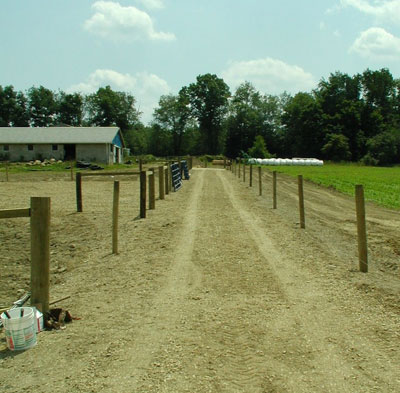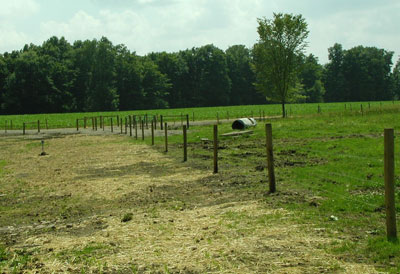Fencing
Improperly installed and/or old and decrepit fencing can cause a lot of headaches for livestock owners. High tensile wire fencing can keep animals in the pastures and out of the wetlands and streams. Fencing can also be used to section off pastures into separate lots, preventing overgrazing.
How is it addressed?
Gate, end, and corner posts should be set first when installing fencing. The bottom wire is strung and used as a guide for setting posts. There should only be bends in the fencing where a corner assembly is installed. Posts can be set with a mechanical post driver or hand-dug and placed in. Hole diameters and guidelines vary according to the type of method the posts are set with. Recommended specific guidelines for fence installation, including information on brace assembly, end post assemblies, fence attachment, battens, crossings, and ground wire fencing, can be obtained from the Crawford Conservation District or the USDA Natural Resources Conservation Service.

DURING: This fence row, in the middle of construction, will keep livestock on dry ground while traveling to different pastures.

AFTER: This newly installed fencing will keep livestock out of the wetland that begins on the left of the picture.
Approximate Cost = $1.25 per foot
The result is:
- Control livestock grazing
- Limit access to streams and wetlands
- Decreased risk of livestock escape

